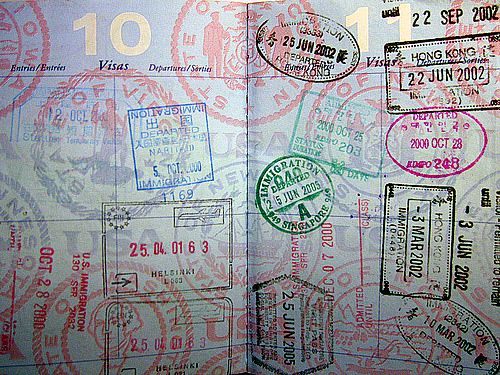
[Note: This is a guest post by Jerel A.Rosati of the University of South Carolina and James M. Scott of Texas Christian University. It is the final installment in our forum on Teaching US Foreign Policy. You can follow more of the conversation at #TeachForPol.]
Teaching US Foreign Policy with The Politics of United States Foreign Policy (6th ed, Cengage: 2014). By Jerel A. Rosati and James M. Scott
Using The Politics of United States Foreign Policy, we engage our students to consider the players, processes, and politics that drive U.S. decisions and involvement in the global political system. Our emphasis on the “politics” of U.S. foreign policy leads us to focus our efforts, on examining and explaining the struggle that occurs to define problems, formulate options, choose policies, and implement them in the context of a highly political process. In this endeavor, we emphasize that a variety of players play a role, and that the struggle over competing values, purposes, meanings, and interests is never far from the surface for both national security and foreign economic policy.
Hence, while our approach includes rich discussion of the policies and problems the US has addressed in its foreign policy over time, we approach those aspects through our focus on policymaking/decisionmaking and the political process through which they occur. Accordingly, we organize our thinking and teaching efforts to:
1. provide substantive description of problems, policies and patterns and their explanations in the foreign policymaking process;
2. address the historical-global environment, the government, and the society as key levels of analysis, focusing on how they interact and impact the real world of politics and the policymaking process;
3. emphasize the political process and the prospects for and challenges to presidential management in the face of the engagement and influence of other institutions, players, and forces in the government, domestic society, and world, with special attention to how these actors and forces operate, interact, conflict, win, compromise, and lose, and how the competing and complementary beliefs and the personalities of these players within and outside government shape foreign policy decisions;
4. integrate theory and practice throughout so as to encourage students to think analytically and theoretically to make sense of the foreign policy choices of the US over time and in different contexts, and to think about and formulate answers to the questions of “how and “why?”
Overall, while we weave substantive knowledge, historical knowledge, and theoretical knowledge to maximize understanding and critical thinking, we approach the topic from a policymaking perspective. In essence, a single overarching question informs and leads us in our engagement with our students: What are the factors that shape and determine the foreign policy choices of the US? We thus stress analytical and theoretical thinking about cause-and-effect in policymaking, integrating factors from international and domestic context with institutional, organizational and individual dynamics and characteristics. Our text, course materials, and classroom approaches foster and support the groundwork to describe what the US has done, does, or might do, and to evaluate the merits of one policy over another, but we privilege the examination and explanation of how and why those choices are made at any given time.
Underlying this is our fundamental philosophy, organized around student engagement and active learning, and around efforts to facilitate subject mastery and the development of critical/analytical thinking generated when students ask “why” questions and formulate answers. Our classes and course materials therefore enable a case-based approach that provides a rich array of opportunities for student writing and active classroom activities from simulations to role-playing to small group interaction and other approaches across a variety of issues. Placing select case studies strategically in the context of our overall outline directs student attention to the factors shaping US policy decisions, and highlights the varying role of such factors at different times and contexts.
For example, addressing the 1962 Cuban Missile Crisis case in the context of presidential leadership highlights both the context (high Cold War) and the role of the president, while exposing key limits on presidential power and management. By contrast, introducing the 1985-86 case of economic sanctions and South Africa directs student attention to both the activities and influence of Congress and its members, and the impact of the post-Vietnam dissensus within government and in the broader US society. Adding cases such as the Clinton administration’s struggle to US interests and policy toward mulitilateral peace operations in the context of Somalia and Rwanda, or the Obama administration’s deliberations over the 2009 great recession or the Afghanistan surge provide similar opportunities. Accordingly, we carefully consider the players, preferences, processes and policies in context as we work with our students to understand and explain US foreign policy choices during the past, present, and immediate future.
Jon Western has spent the last fifteen years teaching IR in liberal arts colleges at Mount Holyoke College and the Five Colleges in western Massachusetts. He has an eclectic range of intellectual interests but often writes on international security, U.S. foreign policy, military intervention, and human rights. He occasionally shares his thoughts about professional life in liberal arts colleges. In his spare time he coaches middle school soccer, mentors the local high school robotics team, skis, and sails.


0 Comments